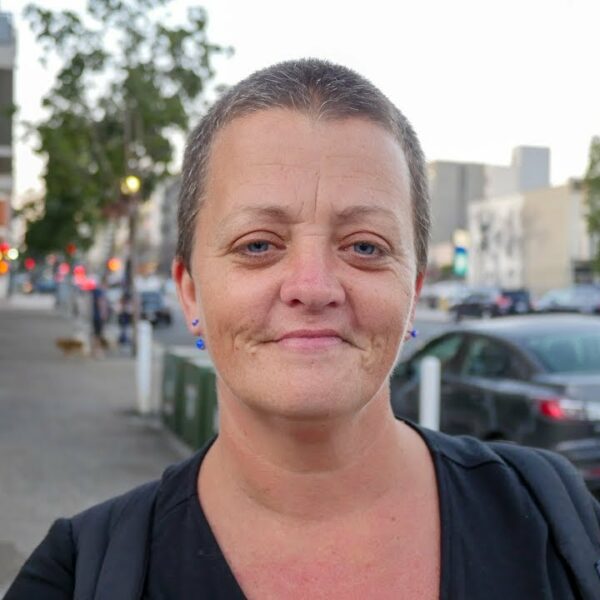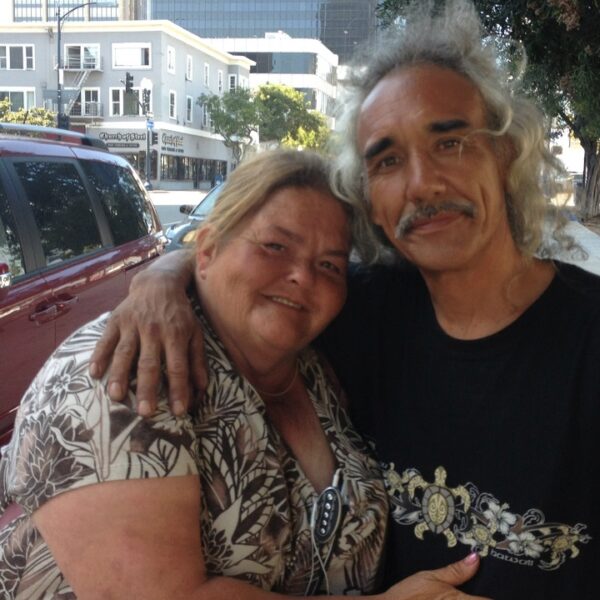“Inmate Howard, Roll up!”, a guard hollers out while approaching my cell from a distance.)
Roll up is the code word for being transferred or released. In maximum security prisons, like the one that I was in, guys are typically serving a lot of time. So you hear roll up for transfers more than for release. The word on transfers is usually known weeks ahead by everyone and it always involves more than one person leaving. So it was obvious what my situation was.
Silence overcame the cell block as prisoners curiously peered through cell door windows to see who was rolling up. Prison is strict on race. To minimize problems, prisoners interact and show concern for what’s going on among their own people. But when someone rolls up, everybody is in on it. I read a variety of expressions from the faces of guys as I was being escorted out to freedom: happiness, envy, hopelessness, and anticipation of their own day coming.
Most assume that men serving life sentences were the envy and hopeless faced ones. But that’s not so. Many of the lifers were old wise souls who offered sound advice like “stay focused!” and “keep your head up!” while others hollered out the more over-used terms without substance such as: “Good luck!” and “Don’t come back!”
Don’t Come Back
In recent years, I had been released several times after return-to-custody parole violation charges ranging from failure to report, missing appointments or for being in known gang areas, a condition that was imposed on me after being documented as an original member of the San Diego Neighborhood Crips (NHC.
This was not my first rodeo, so I took most farewells with a grain of salt. However, there was one that was becoming very frustrating to me: “Don’t come back.”
Don’t come back was over-simplified because it offered no re-entry support or solutions to recidivism. Most misleading was that it implied we had control over our own destiny. Don’t come back was a challenge with just the conditions of parole to abide by. But this time, just as the last, I was returning with an added condition: homelessness.
After pulling into San Diego on the Greyhound bus, I had to report to my parole agent’s office within 24-hours or a warrant would be issued for my arrest. Once there, he or she would drug test me, take mugshots, and tell me there was no funding for anything I needed such as housing, clothing and public transportation bus passes.
My condition of being homeless was a launching pad for other problems that derived from it. These included drug and alcohol use, missing appointments, and survival-mode violence, to name a few. My past as a gang member made me a high-level risk factor when it came to homelessness. Why? Police targeted me and active gang members knew my past. It also opened me up to alcohol and drug use because I would self-medicate to cope with my condition without taking desperate measures.
The odds were stacked so high against us as homeless parolees that most parole agents never monitored us. They completed the initial 24-hour check-in upon our release and then waited for us to have contact with law enforcement so that they could lock us up for a violation again. It was much easier this way.
Back in the Days
Back in the day, there were just a few housing programs for formerly incarcerated people. They called them halfway houses. However, there was certain criteria you must fit to qualify. Halfway houses were for first and low-level offenders only. Documented gang members and “repeats” were considered high-risk and unsalvageable. As a result, they focused on opportunities for the lows and used the highs to “feed the machine”. This was done by keeping us in and out of revolving prison doors.
I was a part of this entrapment in the late 1980s and continued on into the early 90s. During this period, I was never convicted of a crime. Instead, I was returned to prison several times as a homeless parole violator.
As a homeless person, I felt that society treated and looked at me the same way the penal system looked at the repeats. It was as if the homeless were unsalvageable and should be overlooked for opportunities to rise from their current condition.
The way society dismissed me as a formerly incarcerated and homeless person impacted me greatly. It made me feel that I was in too deep and had to ride it out until the end.
As a result of this mindset, I think it’s safe to say that I spent more time thinking about change than trying to. They had me convinced that I wasn’t worth the effort.
In 1991, I was involved in an incident with another homeless guy on a downtown San Diego street corner.
He thought I had drugs and was refusing to sell to him because he only had $6, but I had nothing. I laughed telling him that if I had drugs, I’d be doing them myself! Others laughed with me, but he did not think it was funny. He came at me with a jacket wrapped around his hand. I did not know what was inside of it, and I did not wait to find out.
My homeless friend Danny who was too little to risk fighting slipped me a small pocketknife to defend myself. I swung it at my opponent as he impeded my arms-reach zone. He continued to pursue me, so I stepped back and swung again. He then turned and walked away assuring me that he would be back!
This encounter was very random and odd because the guy knew my nickname. Yet I never recalled meeting him before. He never came back as promised, but the police came in his place. They charged me with attempted murder saying that he had been injured in the chest, which is a potentially fatal area of the body. I could not believe that this had taken place. I didn’t even know that I had got him, and I certainly was not trying to kill him!
It turned out my opponent had felony warrants out for his arrest. After a couple of days in the hospital, he slipped out unnoticed. The parole board operates separately from the courts. They gave me the maximum one-year violation since the courts couldn’t charge me. But before I could get out, detectives located their victim in Texas and threatened to place him in jail for his warrants unless he came back and testified against me. He agreed and I received 15 years.
Dread on Arrival
I returned to San Diego a decade later in the same position I had left in: homeless. After 10 years I thought they would give priority to help a person like me, but I was wrong. The parole department now had contracts with two hotel slums that gave vouchers to the high-level repeats to share small, cluttered four to six-man rooms. The rooms were infested with roaches and bed bugs. And the showers and toilets were stopped up with urine and feces. I turned myself in to a drug rehab to get a safer roof over my head. The drug program was only for 90-days so I got a job and rented a hotel room of my own once my time was up. I then bounced from one place to another for the next few years barely escaping complete homelessness by a paycheck.
Finally, a halfway house opened for high levels. It was an opportunity I felt should have been available long ago. This is especially true for high levels because we are more at-risk than the lows! This program allowed me to get a job and save money for up to a year or sooner if I felt that I could make it from there. It also provided three daily meals.
Since being given the opportunity to establish shelter of my own, I have never been back to jail or prison again.
I have written three books. And, I am now lead organizer for the San Diego chapter of All of Us or None, a non-profit prisoner’s rights organization that supports formerly incarcerated people and their families.
When I looked back on how my life was impacted by homelessness, I was floored! I saw that I was convicted of crimes four separate times – Yet three of those convictions occurred when I was homeless. The only one that did not occur while I was homeless was my first conviction, which took place when I was just 18-years old and still living at home. Not even as a member of the Crips did I have more run-ins with the law than I had as a homeless person.
If everything were erased off my criminal record that happened while I was homeless, my record would be clean enough to apply for a government job.













